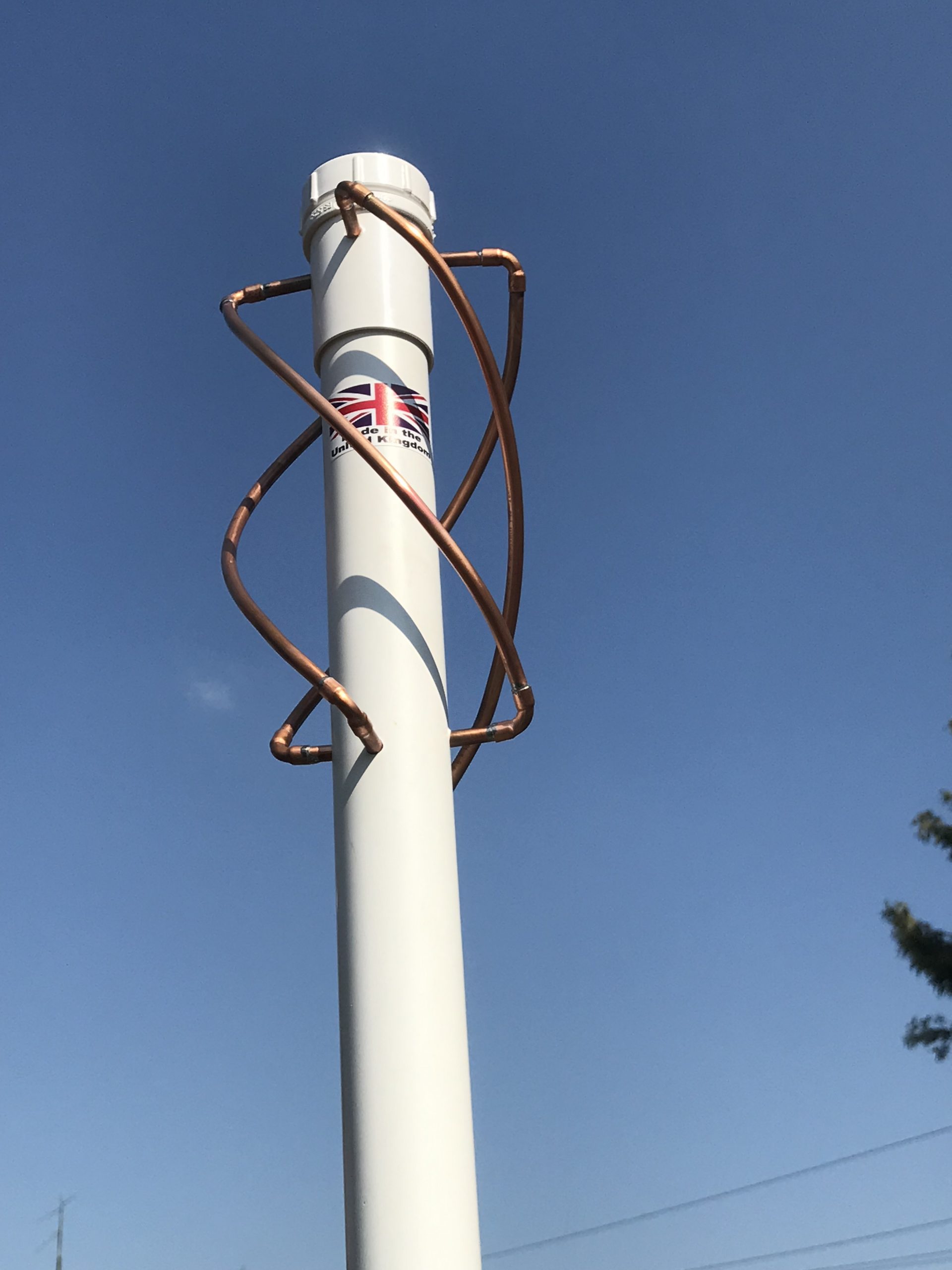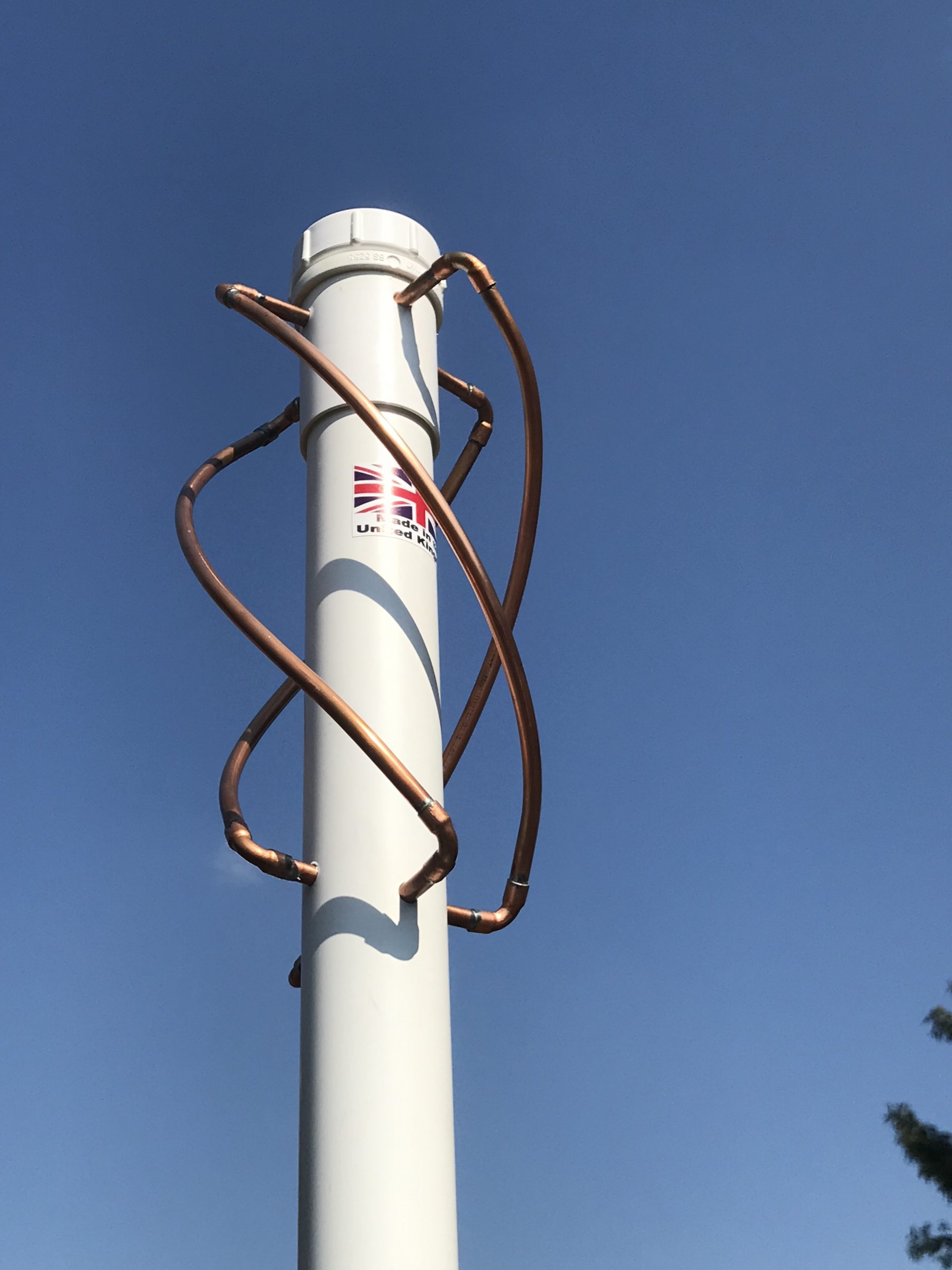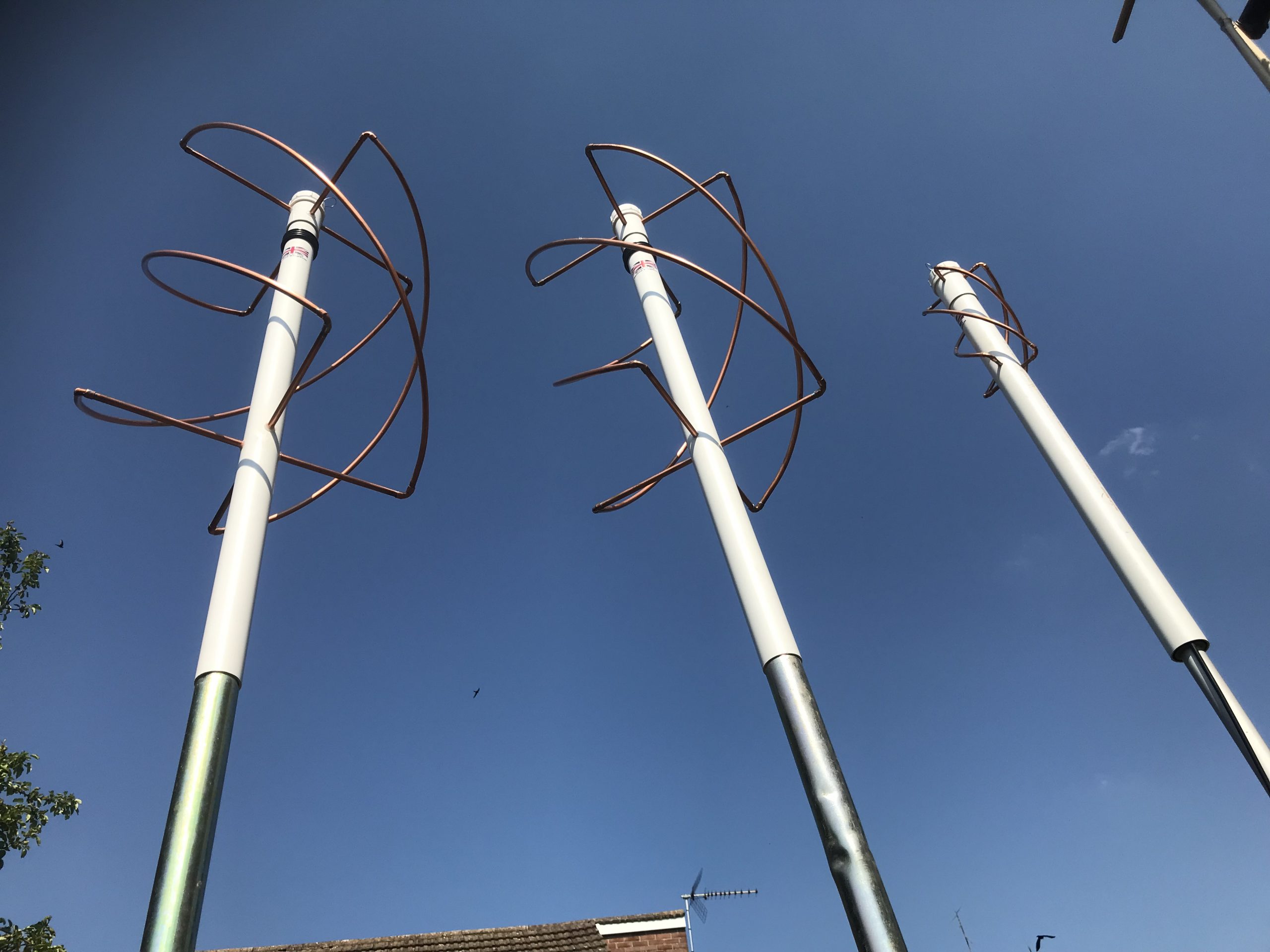![]()
This page last updated 31 December 2025.
(Price: £120 + shipping. Price correct January, 2026)
Click any of the gallery images above for larger view. In the images showing three different antennas, the 435MHz antenna is the one on the right of the group.
Following on from the success of the 137MHz and 144MHz designs, and to satisfy the demands of radio amateurs wanting to receive UHF satellite signals, this is the latest in our family of QuadriFilar Helix antennas.
The design proved somewhat of a challenge as the perfect design can’t actually be physically assembled, (an issue with many great design ideas I’m told!), and feeding the antenna from the top while retaining its omnidirectional properties presents further hurdles. Eventually, the challenges were overcome with the use of a few tricks, some experimentation, loss of a few nights’ sleep, and some helpful input from some work colleagues.
Have a look at the Testimonials page for a review of a typical user’s experience with this antenna.
Please expand each of the items below to find out all about this antenna. An order form can be found in the “How to Buy” section.
The most important part of any radio station is the antenna. An incorrectly selected antenna can mark the difference between success and failure. While you can receive signals from satellites using a fairly simple dipole or monopole antenna, you will find that the signal fades in and out as the satellite’s antenna changes polarisation, and you may get loss of signal when the satellite is directly overhead or near the horizon.
The answer: Use a Quadrifilar Helix Antenna! This strange-looking antenna, often named the egg-beater antenna (for obvious reasons), was invented in the 1940s and has become something of a stablemate for modern satellite communications, and also other uses such as wifi. These antennas have a fundamental ability to demonstrate high gain with regard to signals presented from the side, and less gain to signals presented from above (when the satellite is overhead the signal is strong and unobstructed). The QFH antenna also has a unique capability of receiving wanted signals for which it was designed, and rejecting unwanted signals.
The signals sent from satellites are of circular polarisation. This polarisation is used because satellites are constantly moving and changing orientation. Therefore relative orientation between linear polarized transmitting and receiving antennas is not guaranteed, i.e both transmitting and receiving antennas vertical, or both horizontal. The polarisation of linear signals is also changed as it travels through space, while circular polarisation is not affected.
The QFH antennas I build and sell are carefully designed to be effective both in operation and in cost. They are built from copper tubing which is formed into the required helix shape using a 3D tube bender, and is soldered at the joints for reliability. The antenna structure is supported using solvent-welded tubing and associated fittings for mechanical strength and weatherproofing. There is a screw-cap fitted at the top for easy access to the coax feed point. I also polish the copper tubing and lacquer it to prevent corrosion and weathering. This antenna could surely be excused as a garden ornament, Christmas decoration, or similar! Whatever happens, your better half won’t mind too much.
This antenna is built to order, priced at £120 each plus shipping in a huge box! (Antenna is approximately 95cm high with a diameter of 11cm. Price correct January, 2026.)
If you need a coax feeder for your antenna, I can offer various options from stock. Full details are provided on this page.
Feedback from customers is always good, with reception results always reported as being nothing short of excellent. These antennas will always beat crossed-dipole antennas, and turnstile antennas by some margin, simply by their design.
My aim is to produce these antennas at cost in the spirit of the hobby. A few people have suggested that the antenna is overpriced, and the materials cost around £30 at their local DIY store. Of course these people omitted to realise that when you buy the components, they don’t just magic themselves into a complex antenna of exact dimensions and set up to perform as required! This takes a few hours of work, and requires the following materials and equipment:
- Pipe straightener
- Pipe cutter
- 3D pipe bender
- Tube drilling jig
- Copper tubing
- Steel wool
- Solder
- Soldering flux
- Soldering torch
- Gas for soldering torch
- Flux remover
- Degreaser
- Lacquer
- Sealant
- PVC solvent cement
- Wet & dry paper
- Heatshrink tubing
- Antenna Analyser
If you require any further information about this antenna, please feel free to contact me by emailing joe@ft8.co.uk.
The price of this antenna is currently £120 (price correct January, 2026) excluding shipping. Please use the contact webform below to place a provisional order. Once I have all your details I will send you a firm quotation for the full price, including shipping costs to your address. If you prefer, you can just send an email to joe@ft8.co.uk but don’t forget to tell me which antenna you are interested in! Please also remember to include your full postal address so we can work out the shipping cost.
If you require a pair for 2m and 70cm bands, these can be shipped together in the same box.
Because of occasional difficulties when attempting to reply to a Gmail address, please also include a telephone or mobile contact number in case I can’t reach you by email.






